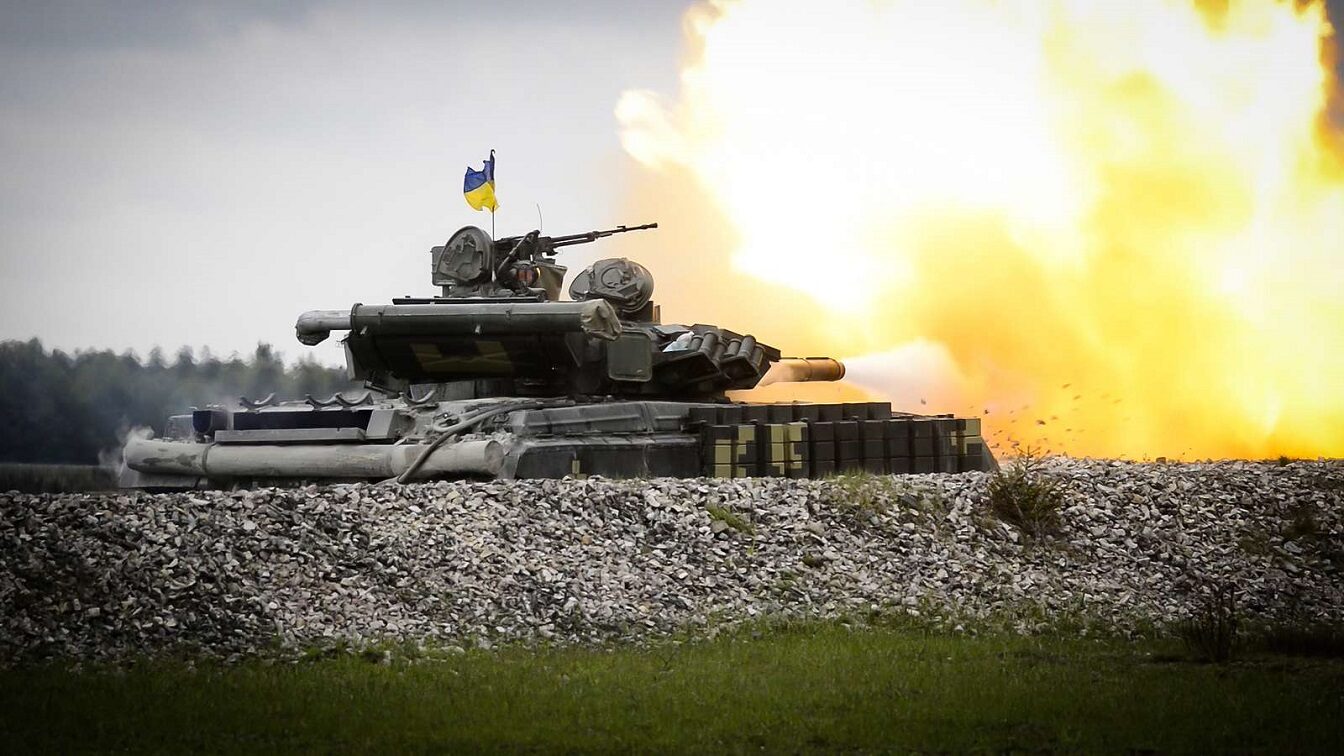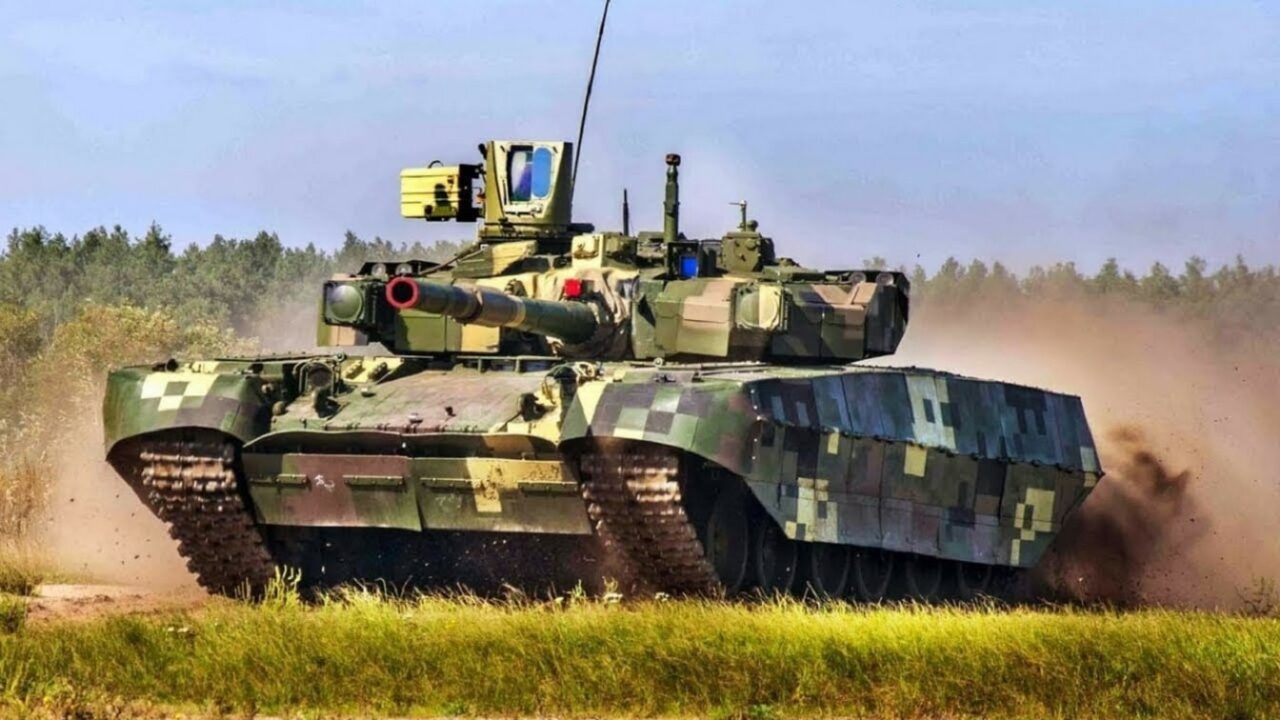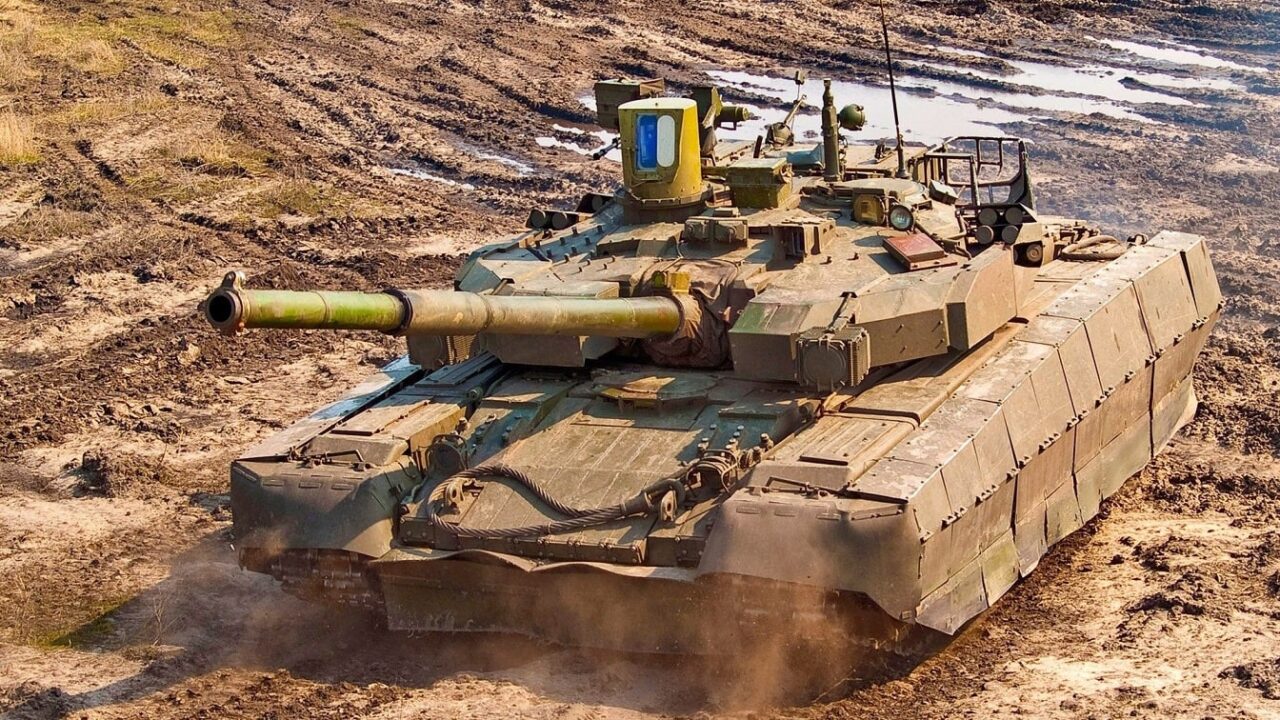Key Points and Summary: Ukraine’s T-84 Oplot main battle tank, developed at the Kharkiv Malyshev Plant, is a significantly upgraded version of the Soviet-era T-80.
-Key improvements include a powerful diesel engine, offering a superior power-to-weight ratio, and advanced electronics, including thermal imaging and a laser-jamming countermeasure system.
-Enhanced crew protection features include improved hatches, air conditioning, and better-armored ammunition storage.
-Ukrainian engineers, drawing on their experience maintaining and upgrading Soviet-era equipment, have created a formidable tank that addresses the shortcomings of its predecessor.
-The T-84 exemplifies Ukraine’s ability to innovate and adapt existing designs for modern battlefield challenges.
Ukraine’s T-84 Oplot: A Soviet-Era Tank Reborn for Modern Battle
Ukraine’s Kharkiv Malyshev Tank Plant, one of the oldest armored vehicle production facilities in all of the former Soviet Union and co-located with the Morozov Design Bureau (KMOKB), is the current-day center of all Ukraine tank systems development. Manufacturing includes the T-84 (Oplot – “Fortress” in Russian and Ukrainian), which is an innovative modification of the Russian-made T-80 main battle tank (MBT) design.
The T-84, based on the Russian T-80 design, began in the USSR as the first successful MBT to be powered with a gas turbine engine. It followed concepts integrated into the US-made M-1 Abrams tank, which included a turbine engine and a newly developed Combination K composite armor.
The most advanced version of the precursor gas-turbine-powered design, the T-80U, was considered a formidable battlefield platform. Moscow provided a number of T-80Us to the Republic of Korea (ROK) as a barter payment for the nation’s debt to the former USSR. The South Korean evaluation was that the T-80U was more effective than they had anticipated, but obtaining spare parts and the fuel consumption rate made it an impractical weapon system.
The turbine engine’s complications motivated Ukraine to develop the diesel-powered variant, the T-80UD. The design and the configuration were validated in 1994, and the tank entered service with the Ukrainian armed forces in 1999. Thailand has received exports of the tank. Ukraine’s major customer for its tanks, Pakistan, has not purchased the T-84. Ukraine will upgrade the previous-model T-80s to retrofit the innovations of the T-84 to those platforms.
The T-84 design addresses the drawbacks of the Ukraine-built T-80 models, making it a more powerful and survivable tank. It is a departure, however, from its design origins in that the Ukrainian tank has incorporated features that did not appear in Russian tank models until the development of the T-14 20 years later.
Design Characteristics of T-84 Tank
Several points of the T-84 stand out as significant improvements that the Morozov Design Bureau integrated into the platform.
-Just as fighter aircraft are always looking for higher-thrust aero-engines to increase the thrust-to-weight ratio, one of the goals of tank designers is to enhance the power-to-weight ratio. The T-84’s engine produces a 26 horsepower per tonne performance by changing from the power plant of the previous models to an opposed piston engine. This makes the tank very fast with a T-90 level of performance. As with the older Ukraine-built T-80 series, there has been no consideration for the use of a gas turbine engine over a diesel design.
-The onboard electronics are also upgraded to state-of-the-art, encompassing a new navigation system, thermal imaging sights, and an optoelectronic countermeasure suite. The countermeasure system can confuse guidance systems for ATGMs with a laser jamming technique, not unlike that used in airborne directed countermeasures that defend against IR surface-to-air missiles. The system’s jamming envelop works in the horizontal plane of ±18° relative to the main gun tube and ±2° in the vertical plane.

A T-84 tank from Ukraine. Image Credit: Creative Commons.
-The same countermeasures suite can jam ATGM guidance systems employing laser illumination and other projectiles aided by laser-guided systems.
-The design of the crew compartment has improved markedly with new hatches that allow for a more rapid egress from the vehicle, an air conditioning system, and a more heavily armored ammunition compartment to prevent ammunition from being ignited by a direct hit to the tank.
-A re-design of the spaced armor of the tank chassis and explosive reactive armor minimizes the effectiveness of ATGMs that carry a tandem warhead.
The T-84 is an effective adaption of a Soviet-era design, like many Ukrainian improvements to basic Soviet-era design concepts. Some of the latest models of home-grown systems follow this path. The famous RK-360MC Neptune anti-ship missile (ASM) that sunk the Russian Black Sea fleet flagship, the Moskva, takes some of its inspiration from the Zvezda-Strela Kh-35, for example.
“The difference between us and the Russians when it comes to design methods,” said a senior Ukrainian weapons systems engineer who spoke to 19FortyFive, “is due to their traditional imperial view of the world. Their factories turn out brand-new systems as they are at the centre of the empire. Those of us in the provinces – as we were in the Soviet time – are responsible for maintaining, repairing and improving on what they have built.

Ukraine T-84 Tank. Image Credit: Creative Commons.
“This explains why our developed T-80 -T-80UD – is better than their analogue, why our missile systems are better than theirs, why our modernized radar sets are better – and so on. They are learning with their horrendous losses in this war that being bigger and more important in their own minds does not win the day in combat.”
About the Author: Reuben F. Johnson
Reuben F. Johnson is a survivor of the February 2022 Russian invasion of Ukraine and is now an Expert on Foreign Military Affairs with the Fundacja im. Kazimierza Pułaskiego in Warsaw. He has been a consultant to the Pentagon, several NATO governments and the Australian government in the fields of defense technology and weapon systems design. Over the past 30 years he has resided in and reported from Russia, Ukraine, Poland, Brazil, the People’s Republic of China and Australia.

